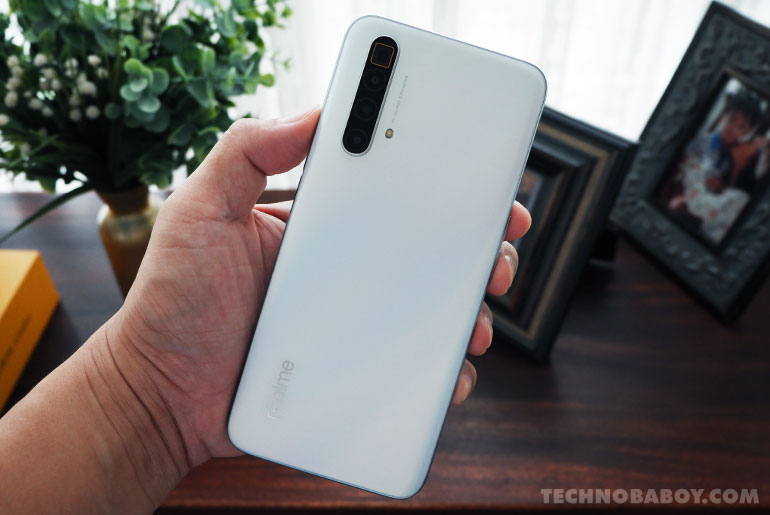realme X3 SuperZoom Review - Android
These days with a lot of phones coming out with similar hardware specs and almost identical designs, it seems like the ‘make it or...
The post realme X3 SuperZoom Review appeared first on YugaTech | Philippines Tech News & Reviews.
These days with a lot of phones coming out with similar hardware specs and almost identical designs, it seems like the ‘make it or break’ it factor when picking a new device often boils down to the whole user experience.

Now with that said, Realme has always been considerate when it comes to introducing reliable performing daily drivers at very affordable prices; and the Realme X3 SuperZoom is no exception. We’ve had this phone for about a month now and here is our full review, let’s get right into it.
Design and Construction
Kicking it off with design and construction, the Realme X3 SuperZoom is probably one of the better-looking phones with this type of configuration. And despite the redundant design approach that I mentioned earlier, some qualities give it a bit an edge compared to other devices out there. The unit that we have now is in Arctic White, which has a smooth, matte finish at the back and has this Aluminum alloy texture that gives off a very premium feel. The rear panel is made of glass, and beneath that, you have this holographic-like effect when exposed to different lighting scenarios. The frame is made out of polycarbonate but doesn’t feel cheap at all and helps with overall grip. Apart from Arctic White, there’s also the more vibrant Glacier Blue if you prefer that more. But I think white looks good.

Coming in with a display size of 6.6-inches, a thickness of 8.9mm, and weighing 202 grams, this device is a little bit on the chunkier side of things. Though if you like phones that have a good amount of heft and feel well constructed, then this fits the bill.

Looking at the front, we have a dual-punch hole camera layout located at the top left that lights up whenever the front shooter is being utilized. Bezels are thin on all sides, except for the bottom chin, and if you were wondering, it doesn’t have a notification light either, but it doesn’t take that long to get over, which is a good thing. It also comes pre-installed with a screen protector, so you don’t have to worry about any scratches on this device.

On the left, you can find the standard volume rocker keys, while on the right sits your power button that also acts as a side-mounted fingerprint scanner. The power button has a satisfying clicky response that requires a little more force than usual to activate, which I like a lot. Some people might prefer having these buttons located on one side instead of two, but since this button is a little recessed, it doesn’t get in the way when propping the phone on landscape mode. It does slip from time to time, especially on smooth surfaces, but the included clear jelly case makes up for those minor issues.

The top is flush with nothing but the secondary mic, and at the bottom, we have your USB Type-C Charging port, a single bottom-firing speaker, the primary mic, and your dual SIM card slot. Sorry guys, no 3.5mm audio jack and MicroSD card slot for this one.
Display and Multimedia
Moving on to display and multimedia, the X3 SuperZoom has a 6.6-inch FHD+ IPS Panel with a screen to body ratio of 90.5%, a pixel density of 399 PPI, and is protected by Corning Gorilla Glass 5.

As mentioned in our hands-on, the X3 SuperZoom comes with a maximum refresh rate of 120Hz, which feels super buttery smooth when navigating throughout the user interface. It’s easily one of the most attractive features of this device, particularly if you’re familiar with how important it affects competitive gaming, which we’ll get into in a bit. But if you think this will improve your viewing experience when watching multimedia content, you might be a little disappointed as most videos don’t support frame rates that high. While I do appreciate the experience of having a phone with a high refresh rate display, I wouldn’t necessarily say it makes a significant impact when going through your daily tasks.
The IPS display is nice and crisp, but an AMOLED screen would have been better to see. It does have rather good viewing angles, though, and with a screen brightness of up to a nice 480 nits, using this device in bright environments won’t be much of a problem.
Audio quality is well balanced and was loud enough to fill up an average-sized room and is pretty good for a bottom-firing speaker. Output was pretty clear, and with Dolby Atmos support, you can fine-tune your sound to your personal preference. However, trying out the different options didn’t give much of an audible difference — at least when it comes to its built-in loudspeaker.
Camera
Moving over to the star of the show, the Realme X3 SuperZoom comes with your typical, vertically aligned quad-camera setup. But what makes this phone a little bit more special is what’s in it. We have a 64MP Main Sensor, an 8MP Periscope Lens with OIS, another 8MP for Ultrawide at 119 degrees FOV, and a 2MP Macro lens with a 4cm focus distance.

The X3 SuperZoom’s 64MP primary camera uses Samsung’s latest GW1 sensor. If you’re wondering how this compares to the Sony IMX 686, they don’t differ much by a large margin except for Sony having a slightly larger sensor. However, other factors, like post-image processing, still play a huge role in the quality of the final image. Nonetheless, the X3 SuperZoom features a very respectable rear camera module. Pictures are nice and crisp, with overall excellent color reproduction. You have the option to switch AI Color Dazzle mode on to give images a little bit more of a pop. Still, colors could often become too overblown, especially under bright environments, so do use this feature sparingly.
Heading over to video quality, the X3 SuperZoom can record up to 4k @ 60/fps using its primary sensor. We get Realme’s UIS Video Stabilization and UIS Max Video Stabilization feature, which gives you beautiful smooth shots even with the shakiest of hands. We also have Slo-Mo recording that enables you to shoot at either 240, 480, or 960 Frames per second. Video playback is nice and bright, as long as you are shooting with the right amount of lighting; since there is less time to expose each frame, especially if you start recording at 960 FPS.

As for the front shooter, we get a 32MP primary sensor coupled with an 8MP Ultrawide lens, which is excellent to have if you are always fond of taking group selfies or if you’re into some casual streaming. Testing it out with all the beauty features switched off, details are very clear with hairs and blemishes being very apparent but, quality seems to significantly lessen whenever shots are taken indoors where there is less substantial lighting. Just like the main camera module, the front camera comes equipped with UIS Video Stabilization, making this also a useful device for some quick vlogging.
All in all, the X3 SuperZoom’s front and rear cameras pass with flying colors, especially when it comes to bright environments. But cameras can show some inconsistency depending on the mode you are using, particularly in low-light scenarios where noise can be quite apparent.
OS, UI, and Apps
When it comes to software, the Realme X3 SuperZoom runs on Realme UI 1.0 based on Android 10, which we like a lot because of it’s clean, stock Android-like look. Now, this does borrow a lot of elements found on ColorOS, which was their previous skin before using their very own; but we think Realme does it a little better with a slightly more refined user interface. Apart from a system-wide dark mode, OSIE Vision Effect, and of course game space for optimization, Realme UI also has Focus Mode, NFC Support, and double-tap to lock. However, for some reason, we don’t get a double tap to unlock, which makes this feature feel a little bit half baked, but it’s still pretty handy to have.

If you look through the settings, you can also find the option to set the refresh rate to 120Hz, 60Hz, or Auto Select. Admittedly, a 120Hz display is a pretty cool thing to have on a phone. Still, we can’t say that it’s a feature a lot of people are currently prioritizing since not all apps support high refresh rate displays, let alone games even; but, the numbers are slowly growing, so that’s something to anticipate.
Gimmick? Not really. Right now, it’s still a relatively uncommon feature to have in the smartphone industry, so it’s only a matter of time before developers start optimizing their apps to support higher frame rates. And don’t get me wrong, at 60Hz, everything still runs just as snappy, but just not as smooth, if you know what I mean.
You can toggle Google Assistant by holding down the power button for half a second. Swiping towards the right of the home screen will give you access to the Smart Assistant section, which lets you access quick functions like open apps, display the weather, track your steps and add your favorite contacts all on one convenient page. Our unit has an internal storage of 256GB, which should be more than enough for the average consumer. Still, again you’ll have to keep in mind that this doesn’t have expandable storage, so it doesn’t make it ideal for storing massive amounts of multimedia content, although still very capable.

As for the fingerprint scanner, those who have gotten used to the rear-mounted layout might be a little confused at the beginning. But actually, I kind of find it an ideal as my middle finger sits right where the power button is. Unlocking the phone is quick, and you can even toggle the sensor to activate either via firm or light touch, depending on your preference. You can also turn face unlock on, which works pretty well
09/07/2020 04:39 AM
New global video coding standard H.266 Codec revealed
09/07/2020 12:32 PM
MSI invites you to watch Ubisoft Forward on July 13
09/07/2020 10:15 AM
Jaguar, Range Rover electric vehicles coming to PH
09/07/2020 08:06 AM
WATCH - realme X3 SuperZoom Full Review
09/07/2020 04:40 AM
Cybercriminals send ransomware to users of out-of-date web browser in APAC
09/07/2020 02:59 AM
Jeep Renegade and Jeep Compass special offers
09/07/2020 09:54 AM
realme X3 SuperZoom launches in the Philippines; Price, specs here
09/07/2020 04:43 AM






